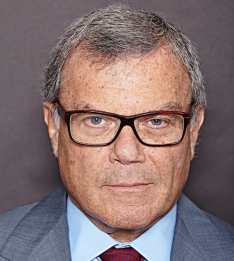WPP sounds the alarm: Industry optimism is misplaced, economic growth is tepid, clients are risk-averse and there is no upside on the way

Sorrell: Brands are cutting costs not going for growth
WPP is the world’s largest communications group, owning a string of creative, media, PR, research and digital agencies. Sorrell is one of the world’s most listened-to economic commentators, with the downbeat outlook offering the gloomiest tone from WPP since the Global Financial Crisis.
The comments come on top of three days of turmoil on the global financial markets.
According to the WPP commentary accompanying its annual results announcement – which includes a healthy growth in profits and revenues for the company over the last 12 months – global gross domestic product is slowing. He warned:

